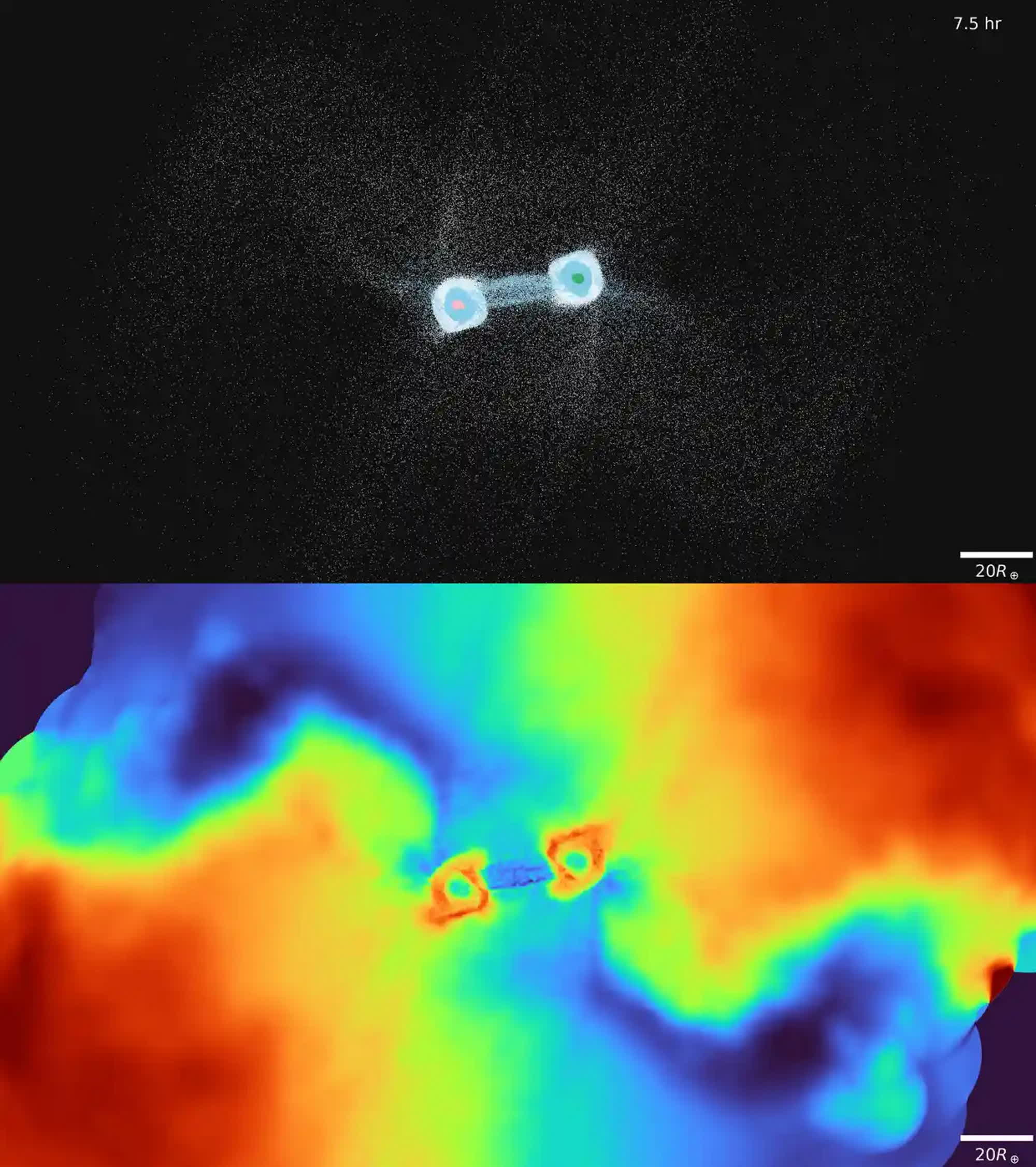A hot cosmic mess: Researchers have detected the afterglow of a cataclysmic event that resulted in the destruction of two ice giant planets. This collision was so intense that it caused a noticeable decrease in the brightness of the system’s host star.
ASASSN-21qj, a star wandering through space 1,800 light-years away from Earth, experienced a reduction in its brightness when two of its planets collided. This cosmic event not only resulted in the complete destruction of the two planets but also gave rise to a doughnut-shaped mass of dust known as a synestia.
Matthew Kenworthy, co-lead author of the study published in Nature, mentioned that the rapidly spinning synestia would be a truly remarkable spectacle. The energy generated by the collision would transform the doughnut into something resembling a star, positioned farther from ASASSN-21qj but about seven times larger in size.
Kenworthy initiated the search for shadows produced by giant rings around planets as they passed in front of their parent star. ASASSN-21qj was an intriguing subject, as the star’s light exhibited an abrupt and unexplained dimming in December 2021. Kenworthy sought assistance from amateur astronomers via social networks, and NASA’s “citizen scientist” Arttu Sainio responded to the call, examining past observations of the aforementioned star.

By examining infrared data gathered by the Neowise space telescope, Sainio unearthed evidence that the ASASSN-21qj system had encountered a sudden surge of infrared light 900 days prior to the dimming incident. Kenworthy expressed that he had been initially searching for something entirely different, but the unexpected infrared radiation spike drew his attention, indicating that an unusual event had clearly occurred in that location.
Upon further analysis of the archived data, the scientist reached a conclusion: the infrared spike emanated from a hot “synestia” object formed by the collision of two Neptune-sized planets. This object had a temperature exceeding 700 degrees Celsius, which would eventually cool down and give rise to a new planet.
The afterglow resulting from the planetary collision, as described in the study, took approximately 2.5 years to disrupt the typical starlight emitted by ASASSN-21qj. During this period, a substantial cloud of dust and minute debris concealed the star’s surface. This event associated with ASASSN-21qj marked the first concrete observation of a synestia-related afterglow, as noted by another co-author of the study, Simon Lock.
Although debris and proto-planetary disks had been observed previously, they had not been accompanied by the infrared radiation detected by Neowise. Additional observations are now scheduled to validate the synestia-based explanation, and the James Webb Space Telescope may aid in detecting the infrared radiation emanating from the newly-formed planet within the ASASSN-21qj system.